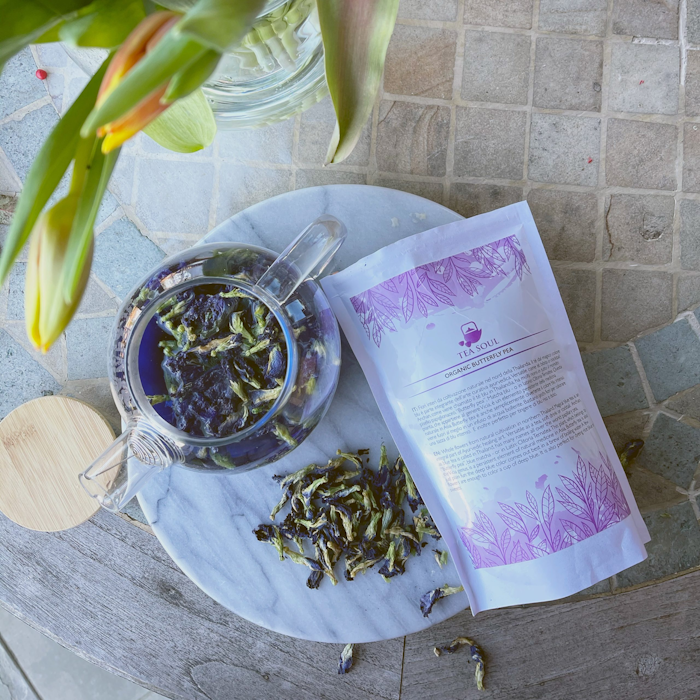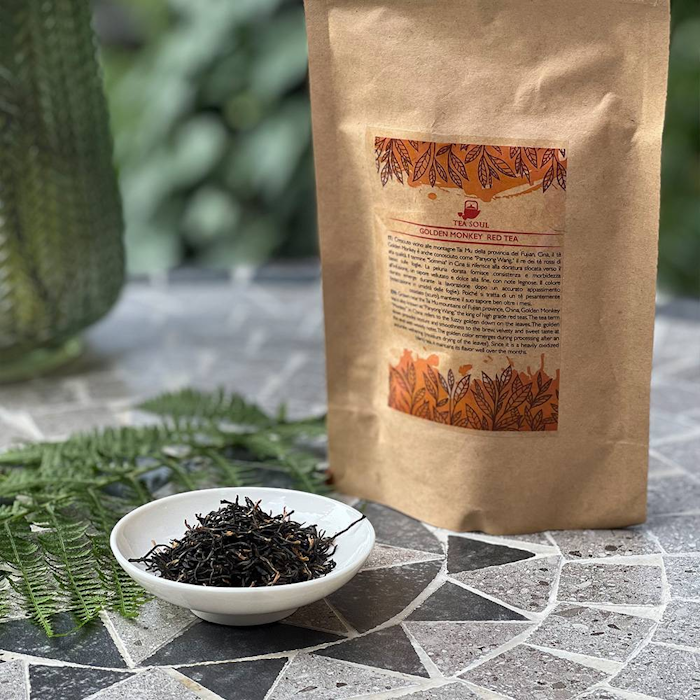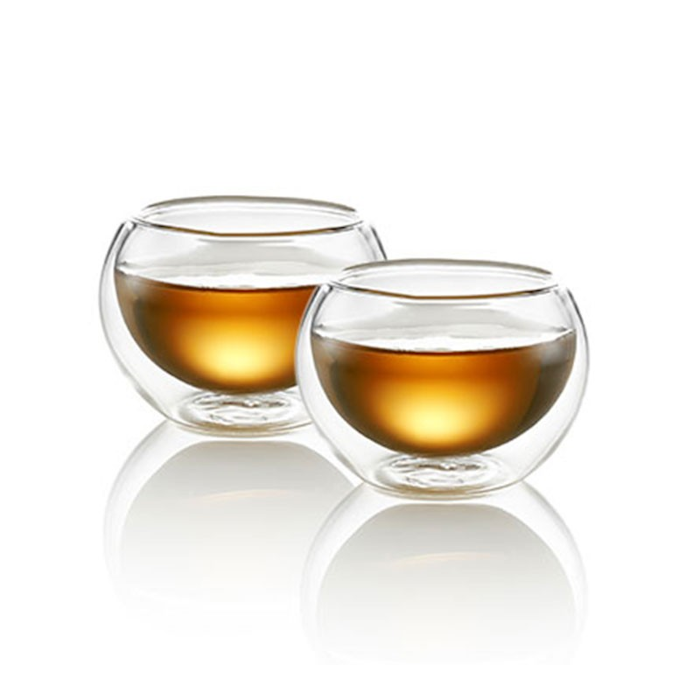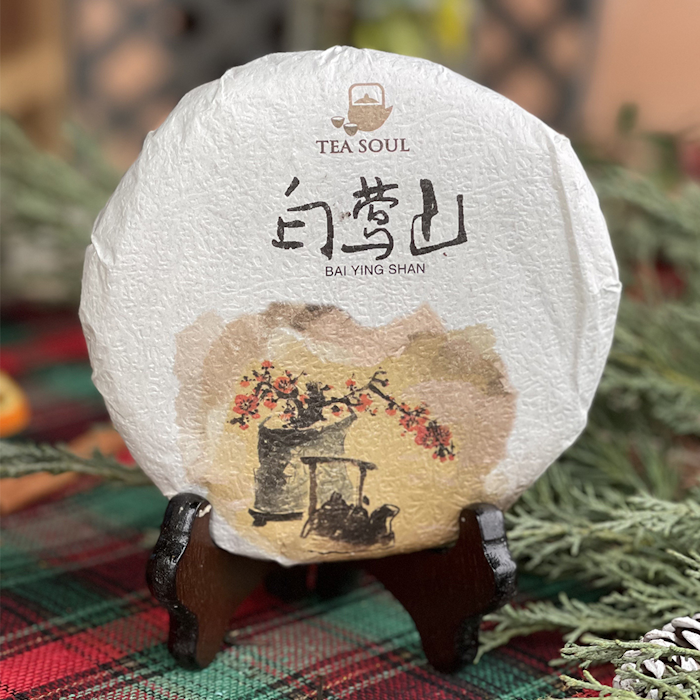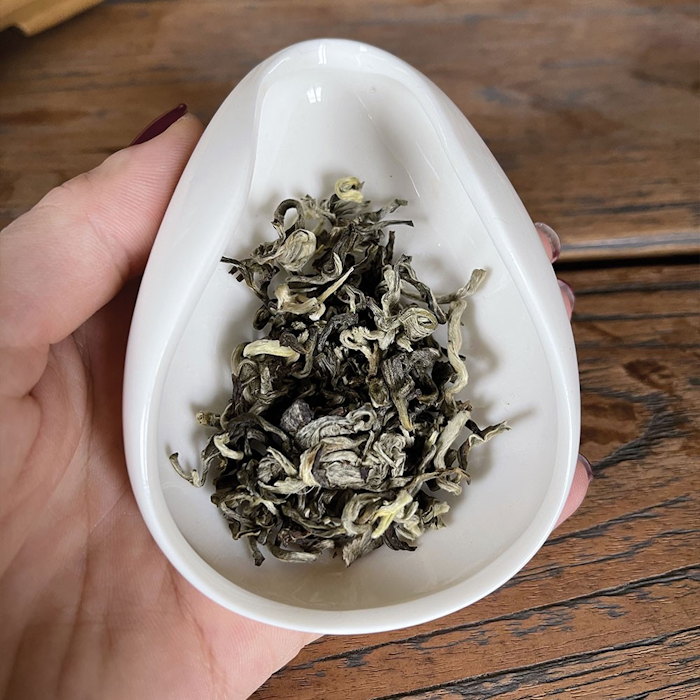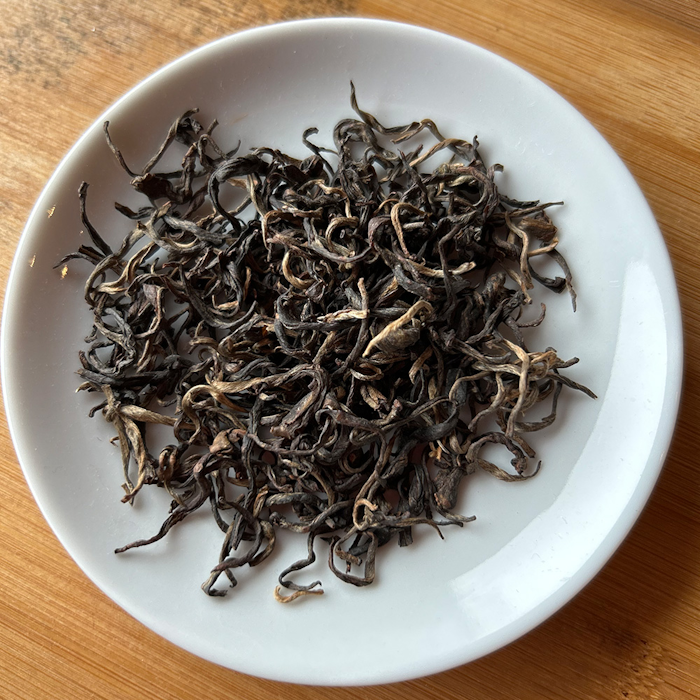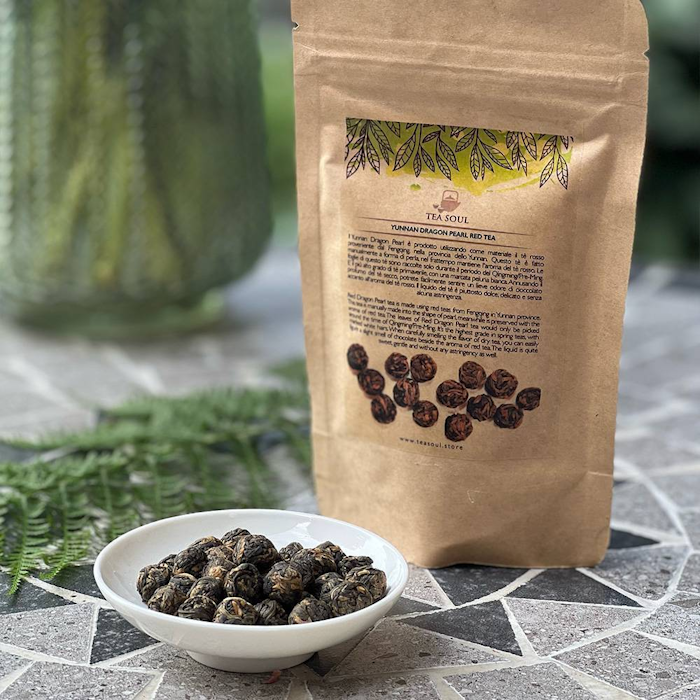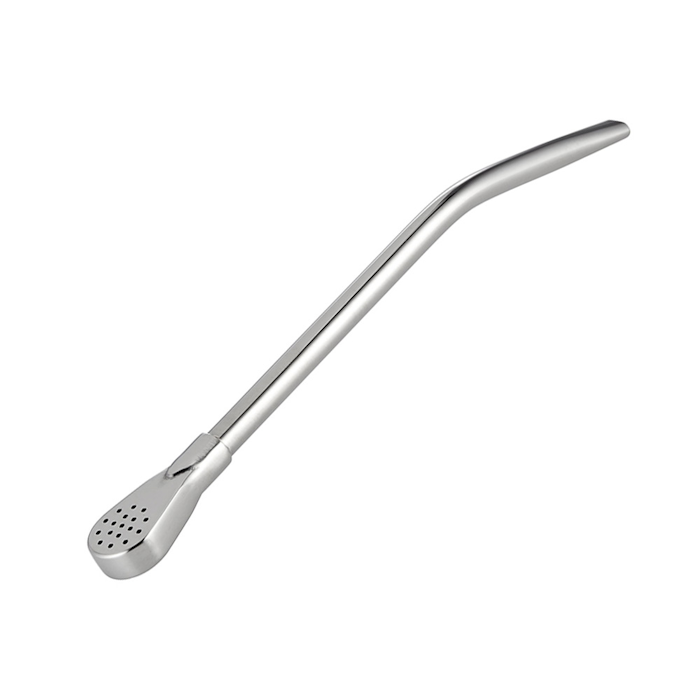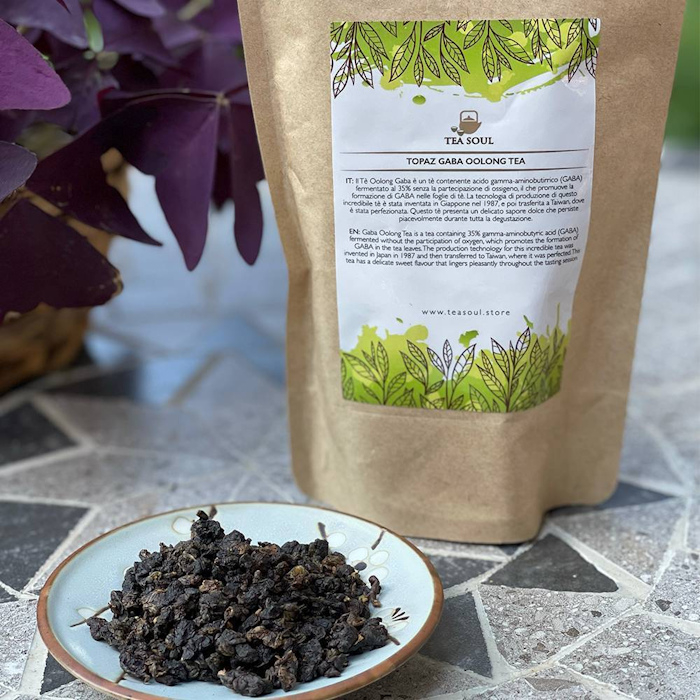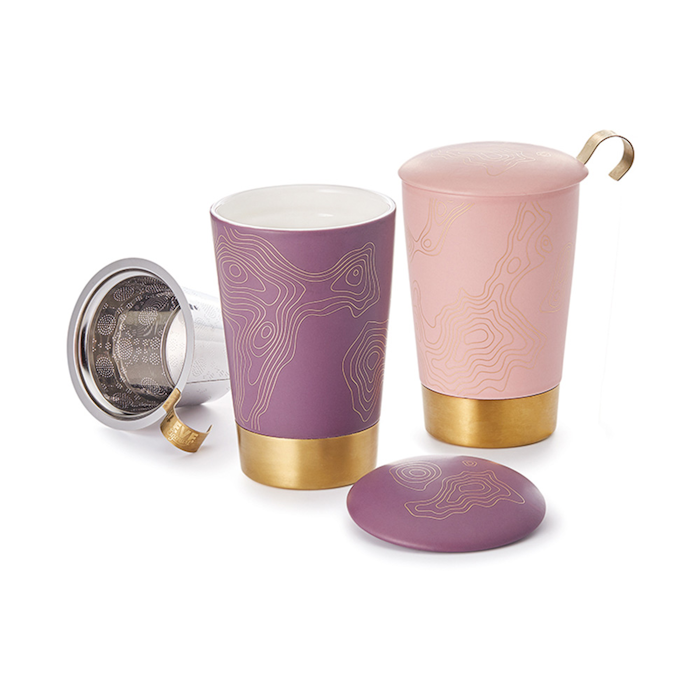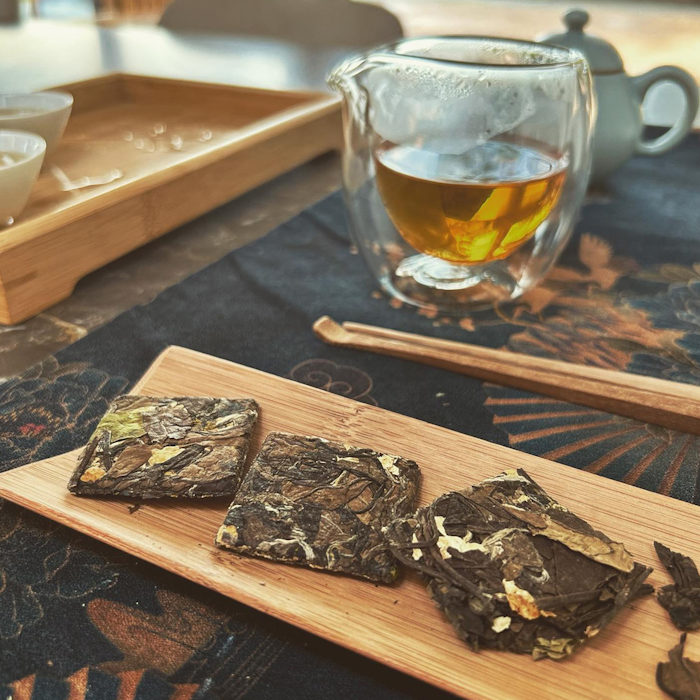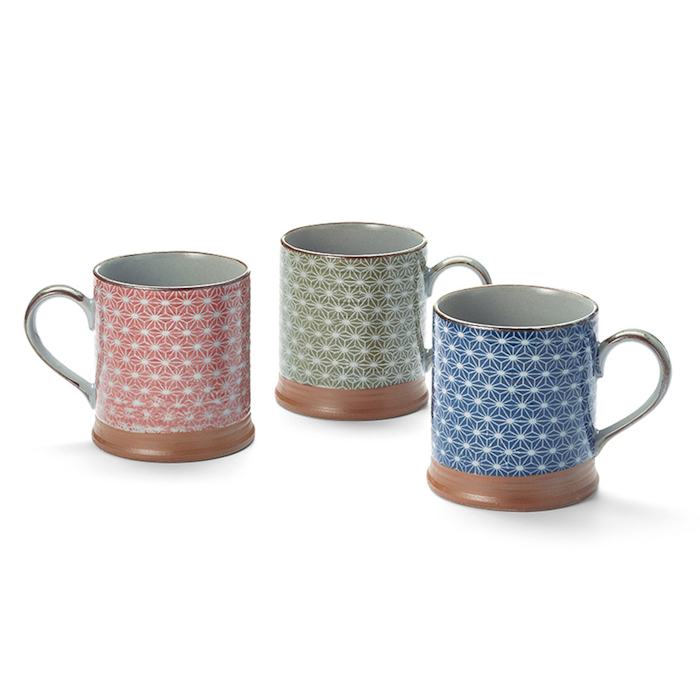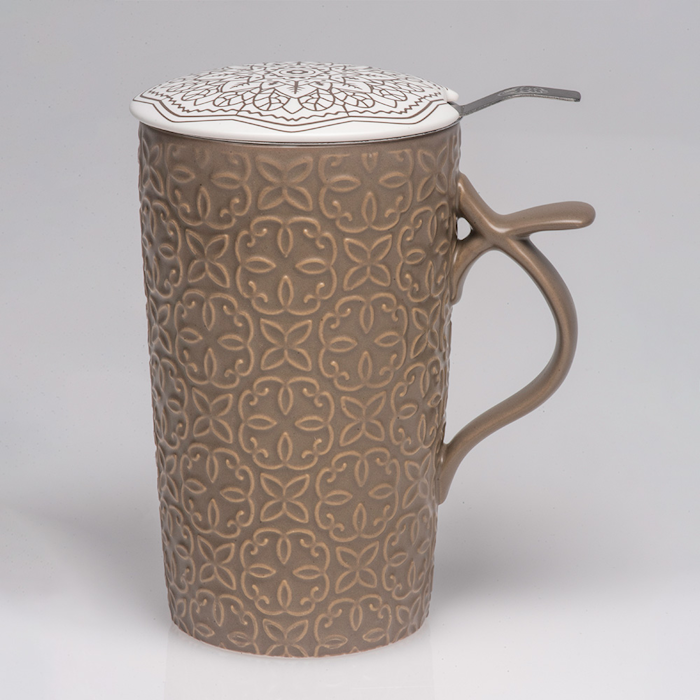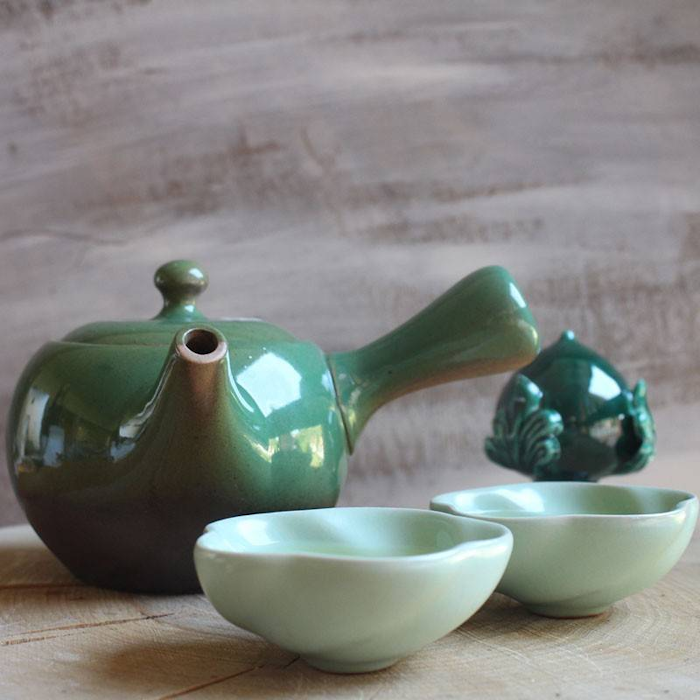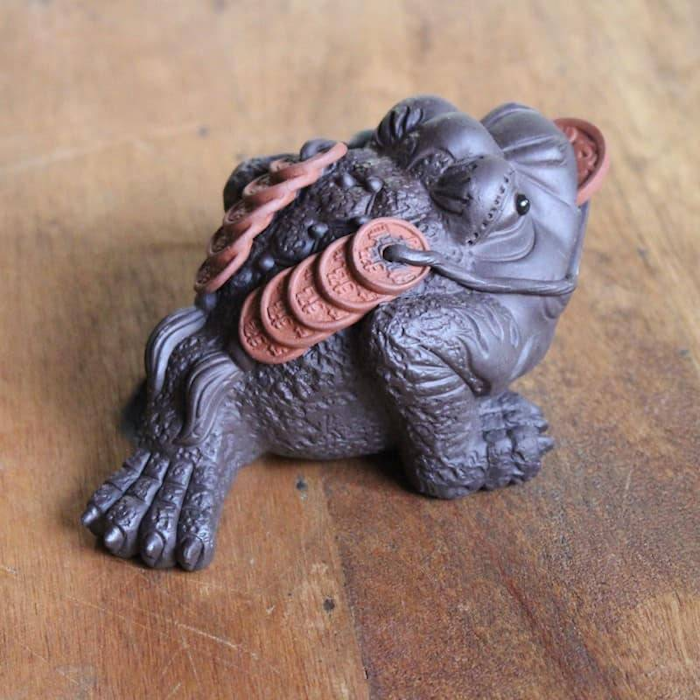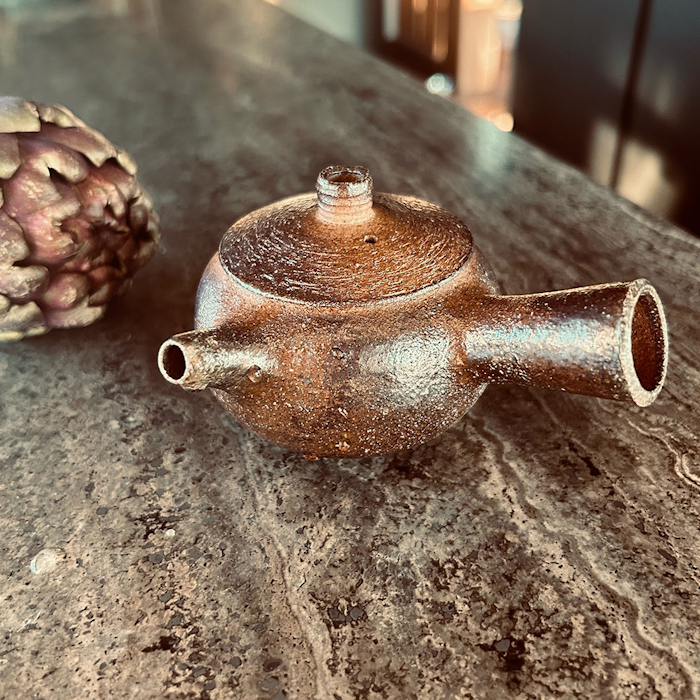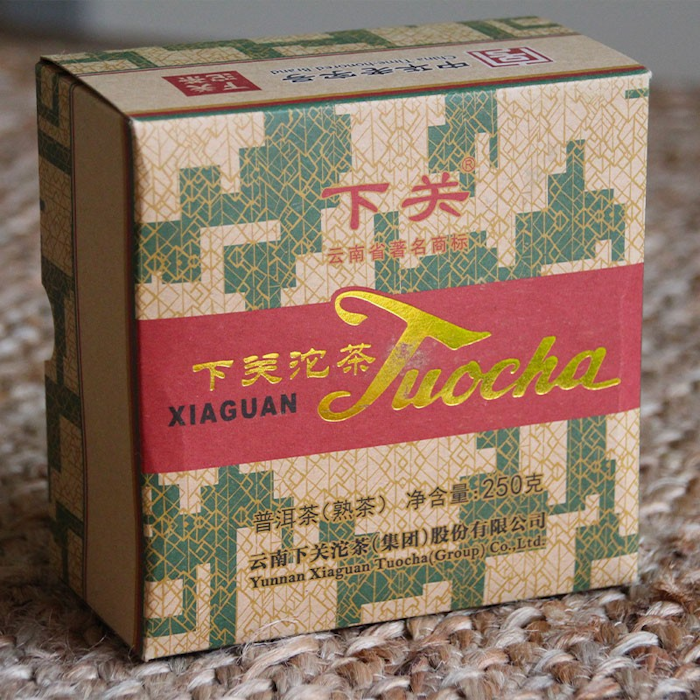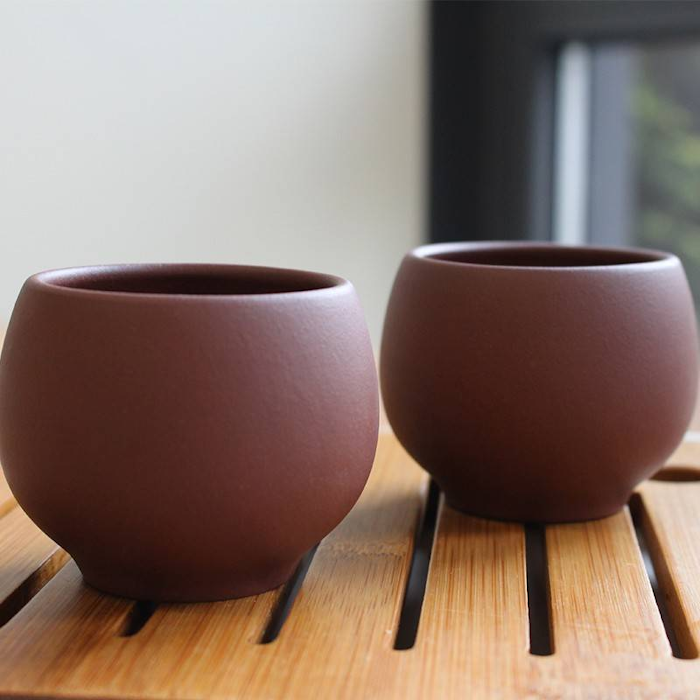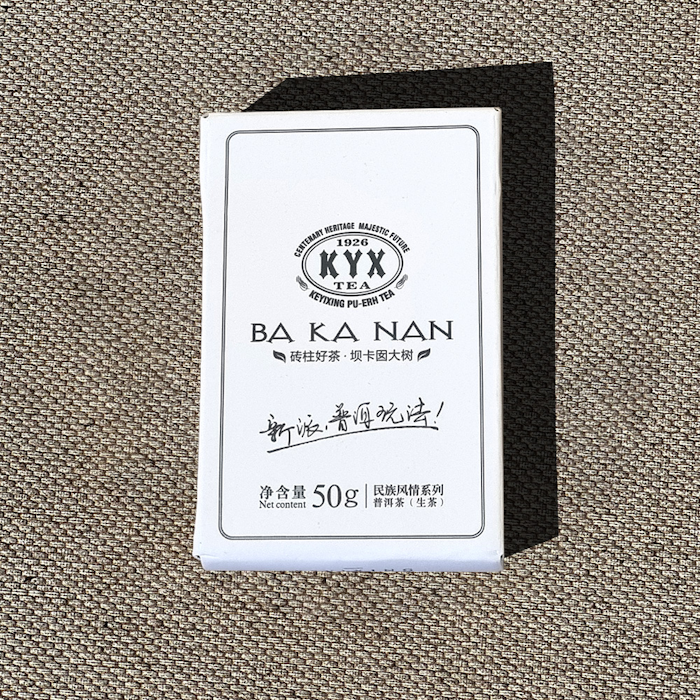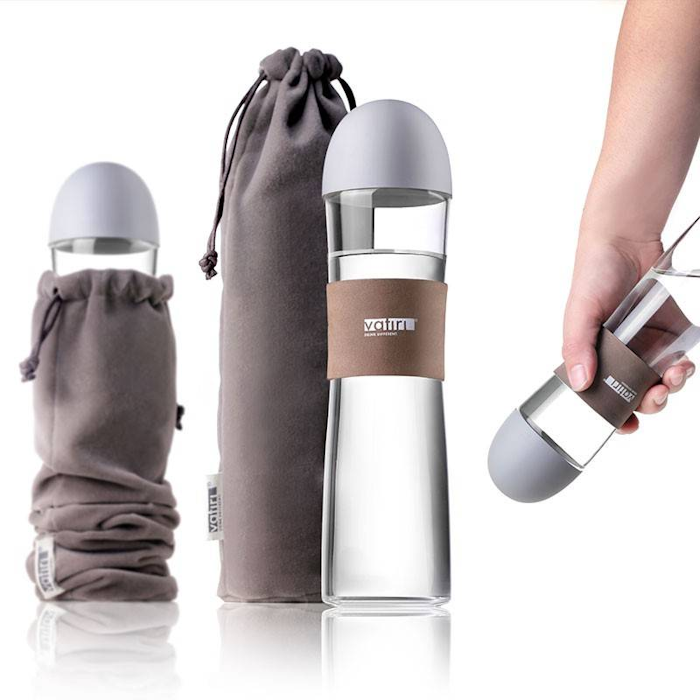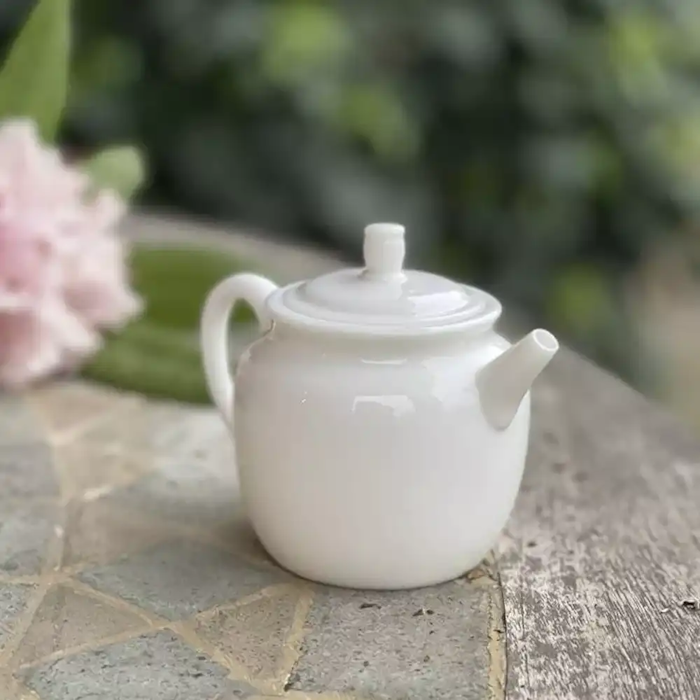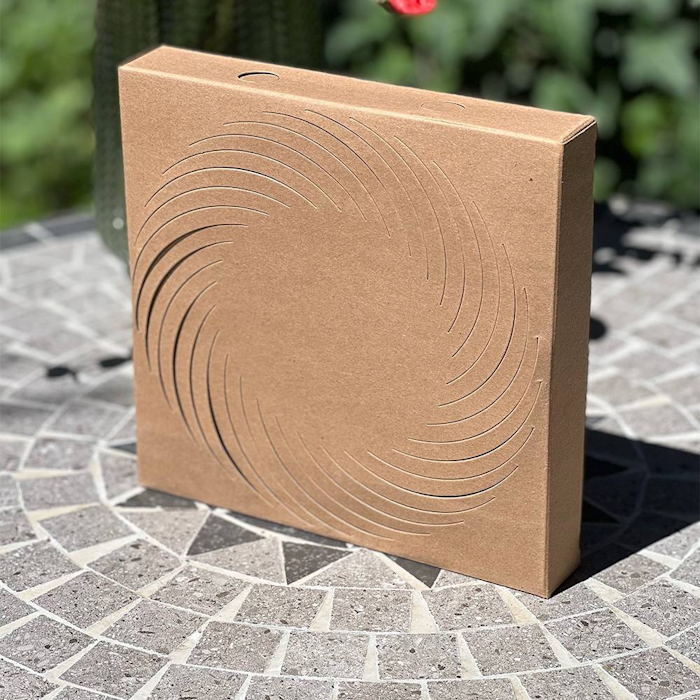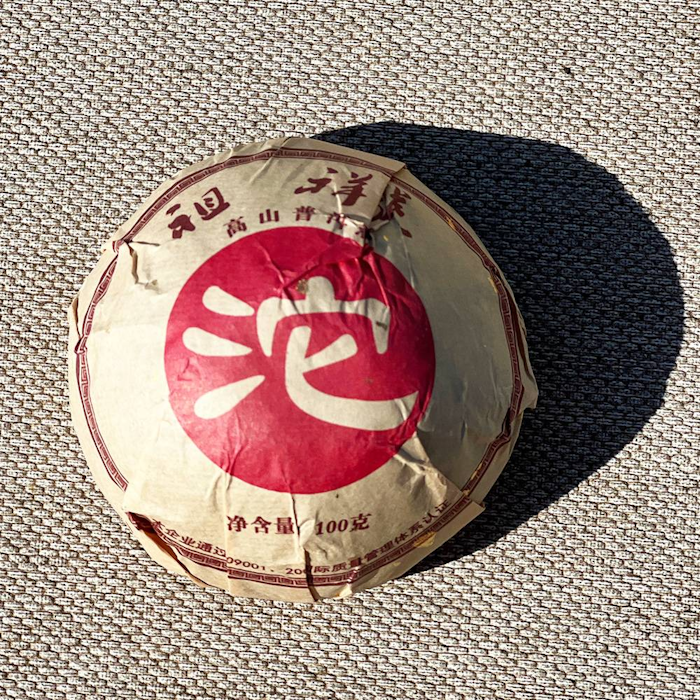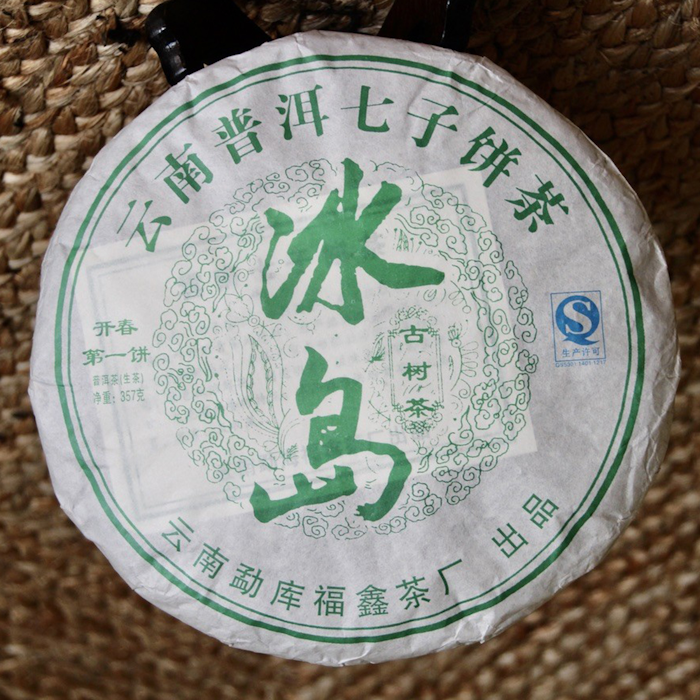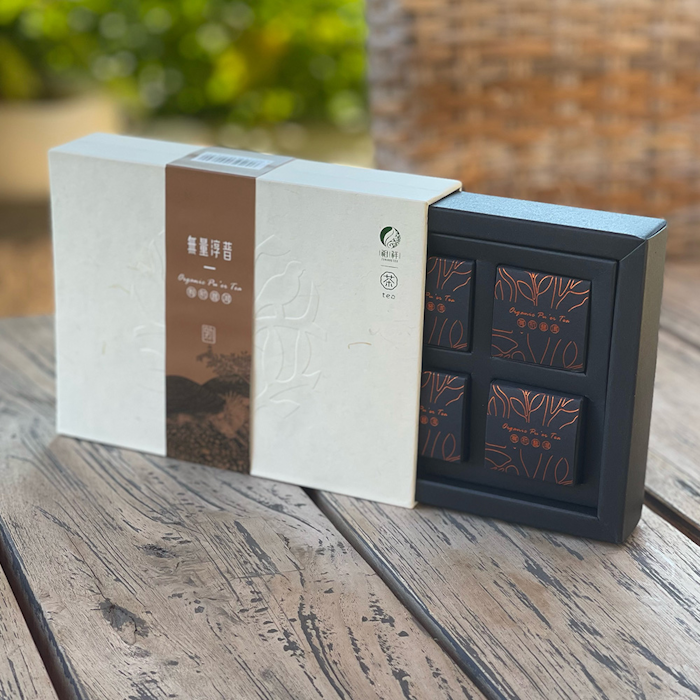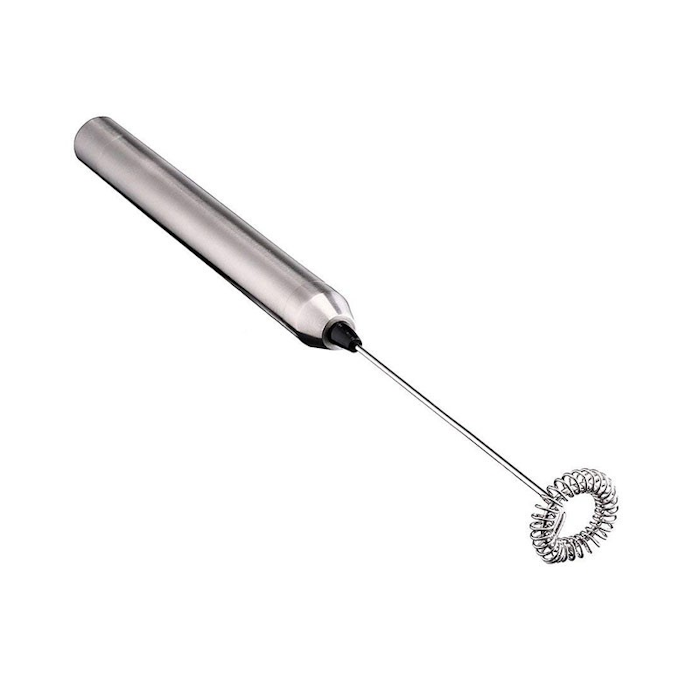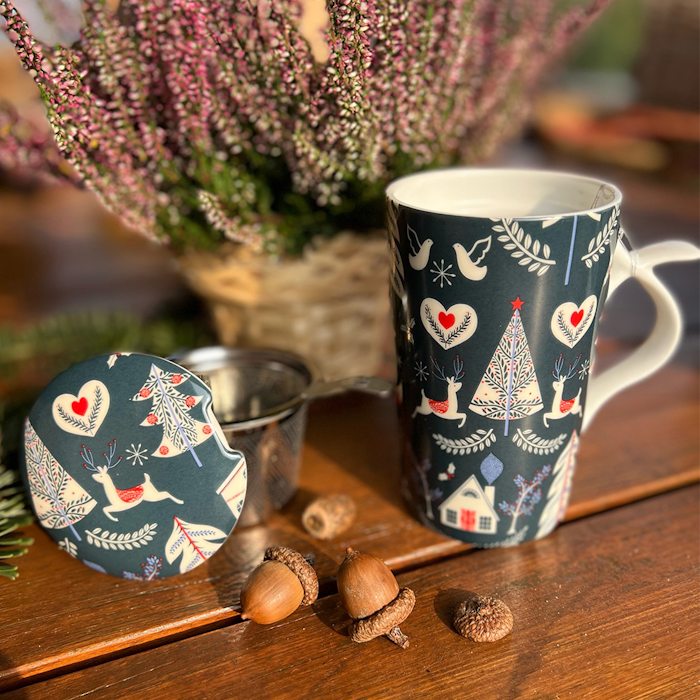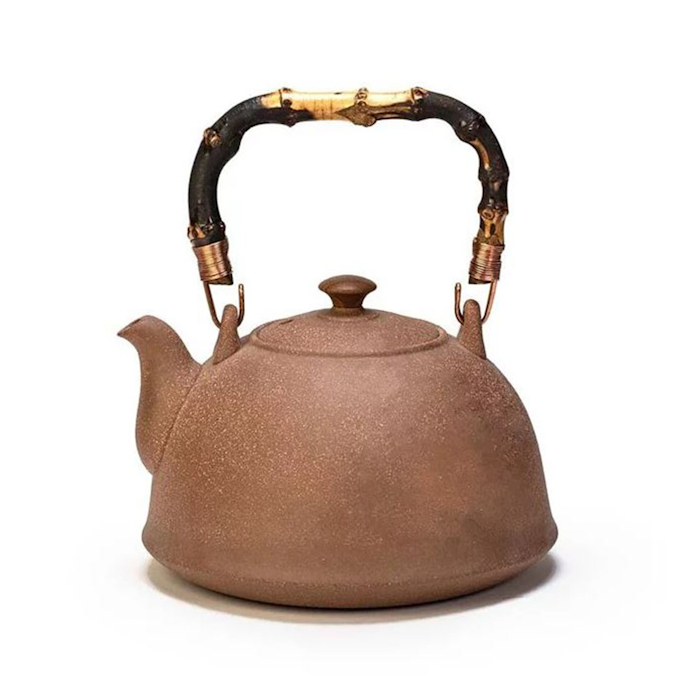The leaves of Bulang 2017 puer shu (cooked) tea come from the Bulang area, which is located in the Yunnan region of southern China. In order to better understand this product, it is necessary to delve into the area of origin of its leaves, since, in most cases, it is the place of origin itself that gives the tea its name and main organoleptic qualities.
This puer, specifically, is composed mainly of the harvest made in the mountainous area called Bulang in the south of Xishuangbanna Autonomous Prefecture, at the most extreme southwestern point of Yunnan. The leaves in question were then carefully selected and pressed in spring 2017 by the Menglun Jingyu factory located in Mengla County. The indication on the factory where the leaves arrive is useful to emphasize that there is a certain style or type of research behind this puer, designed by a special group of tea masters to enhance the territorial characteristics of the product.
Tasting - Sight and Smell
The leaves of puer shu Bulang 2017 tea are pressed rather compactly, with a partially rolled and partially flattened shape and dark colors ranging from deep brown to coppery brown. Once infused, the leaves release aromas of damp earth and bark, balsamic hints of fennel and star anise, and a finish of musk and camphor. The color of the liqueur evolves from a clear, transparent amber orange to a dark orange, to the deep red and almost impenetrable brown of the latest infusions.
Tasting Notes
GONG FU CHA
The first infusion of puer shu Bulang 2017 tea has a rare smoothness, with delicate notes of wet earth, burnt wood and a sweetness reminiscent of licorice. The finish is balsamic and fresh, with hints of mountain herbs and gentian. As the infusions proceed, the sweetness becomes more intense and a particular sugary sensation remains on the back of the tongue. Empyreumatic notes also emerge more strongly with a surprising coffee finish. The last infusions have a strong and deep character, bringing out the woody and bark component, a woody moisture and memories of peaty whiskey. A complex, medium-bodied tea with a long persistence that leaves hints of wood and coffee on the palate.
Location of origin
Bulang - Yunnan, China
Bulang puer shu tea production 2017
After harvesting, the leaves are left to wither in the sun for a certain amount of time depending on the producer before going through the "green killing" stage, which is purportedly similar to that used to produce green teas. The special feature, in this case, lies in not heating the leaves as much as is done for a green tea so that certain enzymes capable of changing flavors over time are preserved. Once cooked, the leaves are taken in large quantities and stacked to form large piles. The plant mass thus arranged is then moistened and covered with cloths so that heat can be retained and the fermentation process can begin. Here the producer will have to skillfully move the leaves around and wet them lightly as he goes so that fermentation advances steadily and is distributed as evenly as possible. Once this process is finished, which can take 20 to 70 days, the leaves are spread out and left in contact with the air so that the microorganisms responsible for fermentation dry out and die, leaving the finished product. Once there, one can (eventually) proceed to press the puer in order to give it the best conditions to be transported and aged. To press the leaves they are passed through for a few seconds by a strong jet of steam so that they are made soft on the outside, and then they are gathered into a sock or sack that will give the product its shape, usually discoidal. In order for this structure to remain fixed over time, the sack is left under a stone or mechanical press for hours while the leaves lose that residual moisture taken up by the steam in the previous stage.
Preparation of Bulang 2017 puer shu tea
We strongly recommend infusing this tea in the traditional Chinese method (Gong Fu Cha) with a gaiwan with a capacity of about 150 ml. By following this preparation, multiple infusions can be made with 5 grams of leaves that are useful to best capture all the flavor nuances of the tea.
Heat the water to a temperature of 95°C: proceed to a short rinse of the leaves and then an initial infusion of 20 seconds. Keeping the water at the same temperature, you can then continue to exploit the same leaves by adding more water and increasing the infusion time by 5 seconds each time (20 - 25 - 30...).
This tea has a longevity of about 6 infusions.
For a more classic preparation according to the Western style we recommend 3 grams of leaves in a 200 ml cup with water at 95°C for an infusion time of 3 minutes.
For a better tasting experience we suggest that you strain the tea as soon as the infusion time is over. The infusion times we suggest can be slightly modified to your liking to achieve a more or less intense taste.
We recommend storing in a cool, dry place away from direct sunlight.












